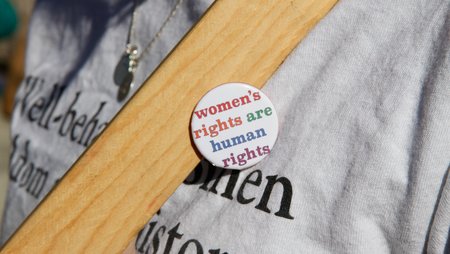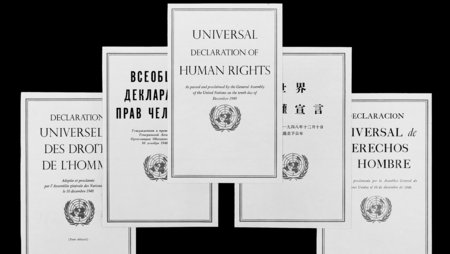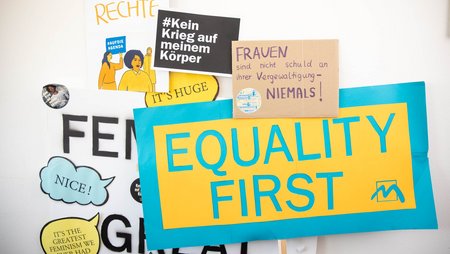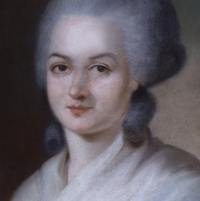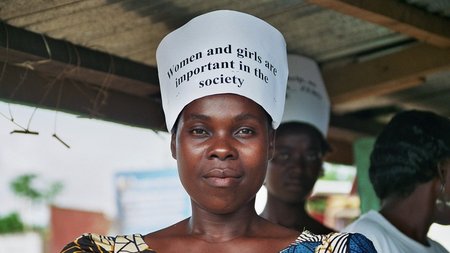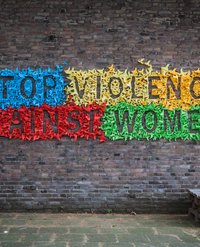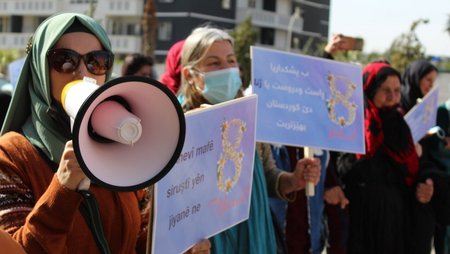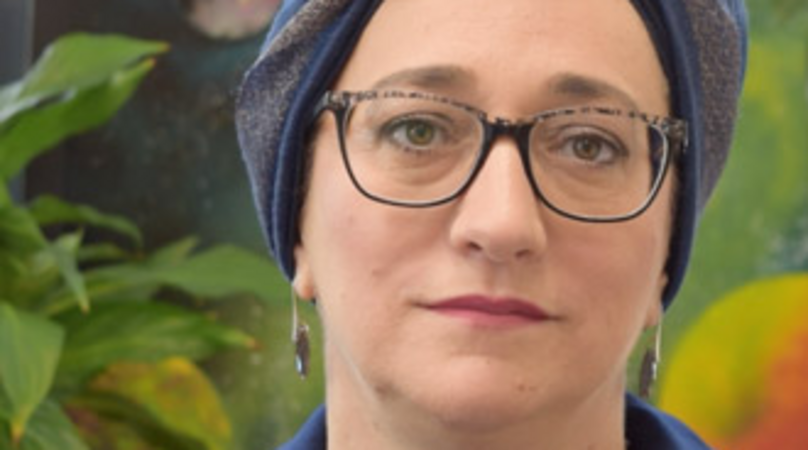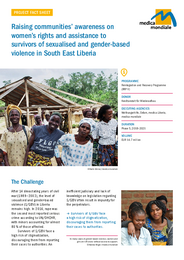Women’s rights are human rights!
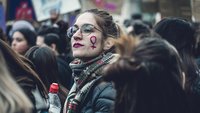
The 1948 Universal Declaration of Human Rights states that all humans are “born free and equal in dignity and rights”. All people are therefore entitled to liberty, dignity and equal rights, regardless of their gender. Yet every day and all around the world, women and girls still experience discrimination and severe violations of these human rights. More women are living in need and poverty than men, they often have less or no access to healthcare, and are ignored with regard to the ownership of property or land. medica mondiale raises awareness of human rights violations against women and is working actively to ensure that women and girls worldwide experience justice and can live in dignity.
FAQ on human and women’s rights
Definition: What are human rights?
Human rights are rights granted to us merely because we exist as humans. These are independent of, for example, gender, nationality, skin colour or religion. In other words, they are universal: they apply to all people. These human rights range from a fundamental right to life, through to the rights to food, health, work, education and liberty.
Definition: What are women’s rights?
Women’s rights are human rights. Women are humans, so women and girls are due the same fundamental rights, such as education, a life free of violence, a fair wage, or the vote. However, worldwide there are many humans being denied the human rights they are entitled to, simply because they are women and girls. Not a single country in the world has yet achieved gender justice. In many places, women are risking their lives by speaking up to assert their rights.
What is in the UN Declaration of Human Rights?
The Universal Declaration of Human Rights consists of 30 Articles agreed in 1948 by the General Assembly of the United Nations. These Articles establish various rights and freedoms, which all have equal status.
Facts and background on human rights and women’s rights
In the wake of the crimes of World War II, by adopting the Universal Declaration of Human Rights in 1948 the international community sought to establish comprehensive protection for all people, regardless of gender, religious and political convictions, national and ethnic origins, or social status. The declaration establishes fundamental political, economic, social and cultural rights. These include the right to live free of violence and discrimination, the right to access education and health, the right to own property, the right to vote and the right to equal pay for equal work.
By adopting the Universal Declaration of Human Rights, for the first time an international agreement was also unmistakably aiming to achieve the equality of women and men in the eyes of the law. However, reaching this aim was a long way off.
From past to present: What developments have there been in human and women’s rights?
The first regulations concerning human rights, such as the French Declaration of the Rights of Man and of the Citizen in 1789, did not intrinsically include women. The French term ‘homme’ at the time was understood as ‘man’, and by definition active citizens had to be men, so these early human and civic rights were accordingly only granted to men. Women were not treated as being of equal value so did not deserve equal rights. They were regarded as part of the personal sphere, and the male authors of the declaration did not deem it necessary to include this in the civic rights.
It did not take long before resistance was being expressed to the men-only rights. The voices included those of the first women’s clubs, which had been set up during the French Revolution, and now demanded that women be treated as equal to men, be granted full citizens’ rights, and be given suffrage. One of the pioneering members was the feminist Olympe de Gouges . She declared “Woman is born free and remains equal to man in rights” in Article 1 of her Declaration of the Rights of Woman and the Female Citizen of September 14, 1791.
It would take and still takes persistence and commitment for human rights to actually become women’s rights. Even during the drafting of the text for the Declaration of Human Rights in 1948, there were vigorous debates about whether it should refer to “men” or “humans”. But in the end, the term “human” won through. And since then, human rights are seen as being granted to all humans, including women as well as men. Furthermore, the Preamble expressly emphasises the “faith in the [...] equal rights of men and women”.
In 1946 the UN Economic and Social Council had already set up the Commission on the Status of Women (CSW), a committee whose express purpose was to promote and monitor equality and the rights of women. The 45 members from all over the world meet once a year in order to assess progress and to draft standards and measures in order to promote women’s rights.
In order to encourage binding commitments relating to the general principles established in the Declaration of Human Rights, in 1966 the United Nations adopted two Human Rights Covenants , and their provisions specifically applied to women. One is known as the Civil Covenant , covering civil and political rights. Examples of the freedoms it protects included the right to free expression, the freedom of privacy, and the freedom of assembly. The other, known as the Social Covenant deals with economic, social and cultural rights. According to this agreement, people have the rights to work, education and a suitable standard of living. Both entered into force in 1976.
The Universal Declaration of Human Rights merely establishes basic principles, so more is needed to actually ensure the rights of women and girls. One step taken by the United Nations to fill this gap was the Convention on the Elimination of All Forms of Discrimination Against Women (CEDAW), passed in December 1979. Known as the Women’s Rights Convention, this obliges the states ratifying it to take active steps to eliminate the discrimination against women in the areas of culture, society, education, politics and legislation.
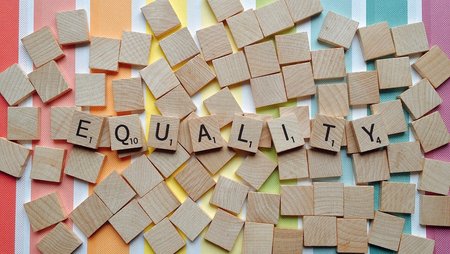
The abbreviation stands for Convention on the Elimination of All Forms of Discrimination Against Women. Sometimes referred to simply as the Women’s Rights Convention, CEDAW was passed by the General Assembly of the United Nations on December 18, 1979, and entered into force in 1981. Its provisions have applied in Germany since 1985.
The states ratifying CEDAW commit themselves to ensure equal participation of women not only on paper but practically: at all levels and in all areas of life. The states are mandated to actively eliminate disadvantages in order to enable women to fully exercise their political, civil, economic, social and cultural human rights. The convention is seen as the most important instrument in international law ensuring human rights for women.
There are 189 parties who have ratified the convention, including Germany in 1985. This means the provisions of the convention apply in Germany with the same status as a federal law.
In the decades since it was passed, CEDAW has led to changes in the law and measures to eliminate discrimination in numerous ratifying countries. in 1982, the UN set up the Committee on the Elimination of Discrimination Against Women to monitor the implementation of the convention. At least every four years, each party to the convention has to report to the CEDAW Committee on “the legislative, judicial, administrative or other measures which they have adopted to give effect to the provisions and on the progress made in this respect”.
In 1999 an Optional Protocol to the CEDAW agreement was adopted by the UN General Assembly and entered into force a year later. This includes provisions for the Committee at the international level to consider complaints from individual women about infringements and violations of human rights in cases where their state does not provide sufficient laws or tangible measures to protect them, or where the state itself is violating their rights.
Protection for women against violence is not explicitly named in the CEDAW. However, women are particularly frequently subjected to so-called “domestic violence” and this is a breach of their human rights. So this violence can be understood and dealt with as a form of discrimination according to Art. 1 CEDAW.
Initiated by the UN Commission on the Status of Women, four world conferences have been held so far. In particular, the 1995 World Conference on Women in Beijing gave important impetus to the enhancement of women’s rights worldwide, agreeing both its closing Beijing Declaration and a Platform for Action, which together are still considered a milestone. One of the participants in Beijing was Marijana Senjak, psychologist and co-founder of the Bosnian women’s rights organisation Medica Zenica. The core interests of the participants were inequality and issues particularly relevant to women such as education, health, violence, political participation and poverty. Unfortunately, these issues are still open 25 years later, with many of their demands not yet fulfilled.
In the Council of Europe Convention on preventing and combating violence against women and domestic violence (to give the Istanbul Convention its full name), gender-based violence is recognised as a violation of human rights. The treaty was signed on May 11, 2011, in the Turkish city by of Istanbul by thirteen member states of the Council of Europe and is binding under international law. It came into force in Germany on February 1, 2018.
Today: How binding are human rights?
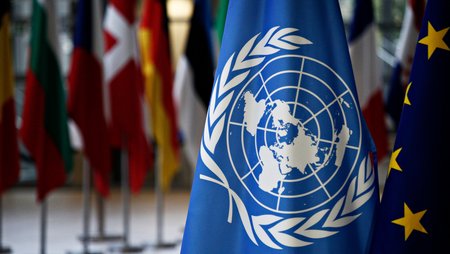
Many countries have anchored significant parts of the Universal Declaration of Human Rights in their constitutions. However, one of the weaknesses of ‘declaratory’ treaties is that they are not legally binding documents in international law. So there is no legal recourse to assert the rights detailed within them. In 1993, the United Nations established The Office of the High Commissioner for Human Rights to promote and protect human rights at the national and international levels.
What is the current situation regarding women’s rights worldwide?
Upholding the human rights of women still faces many obstacles. In the statistics of the United Nations, women are in a worse position than men in almost all areas of life. So far there is not a single country in the world that has achieved complete social and economic equality for men and women – this can be seen in the “Global Gender Gap Index" compiled by the World Economic Forum. The protection and promotion of human rights for women and girls remains an important duty for governments and societies around the world.
Milestones for women’s rights from the United Nations
UN Charter: For the first time at international level, an end to gender discrimination is posited. Article 1.3 of the UN Charter promotes and encourages “fundamental freedoms for all without distinction as to sex”.
Creation of the UN Commission on the Status of Women
First World Conference on Women in Mexico
The UN Convention on the Elimination of All Forms of Discrimination Against Women (CEDAW) enters into force.
The UN General Assembly adopts the “Declaration on the Elimination of Violence against Women".
Establishment of the UN Special Rapporteur on violence against women, its causes and consequences
Fourth World Conference on Women in Beijing, adoption of the Beijing Declaration and the Platform for Action
The Rome Statute recognises systematic rape and other forms of sexualised violence as war crimes and as crimes against humanity. This statute is the treaty that established the International Criminal Court in The Hague.
The UN Security Council passed Resolution 1325 on Women, Peace and Security, setting forth its position on the role of women in the prevention and resolution of conflicts, in reconstruction, in peace processes and in security policy.
The UN Security Council Resolution 1820 recognises sexualised violence as a threat to security and peace.
Security Council Resolution 2106: For the first time at the multilateral level, an instrument is adopted that sends a strong signal to the perpetrators in order to combat sexualised violence in conflicts.
The Agenda 2030 declares the equality of the genders to be a Sustainable Development Goal.
Women’s rights in Germany: History of equality – a timeline
The German Civil Code (BGB) enters into force. The husband is assigned authority over all issues of married and family life.
19 March: In Germany, the “International Women’s Day” is celebrated for the first time.
On November 30, women gain active and passive suffrage for the first time. These rights are anchored in Article 109, para. 2 of the Weimar Constitution from 1 August 1919.
On May 23, the Basic Law of the Federal Republic of Germany entered into force. Article 3 (2) of this new constitution contains the short and clear declaration: “Men and women shall have equal rights.”
Equal Rights Act – The law on the equality of men and women
At the UN World Conference on Women in Copenhagen, the German Federal Government signs the Convention of 18 December 1979 on the elimination of all forms of discrimination against women.
The law on the UN Convention on the Elimination of All Forms of Discrimination Against Women (CEDAW) from December 18, 1979 now enters into force.
The requirement of equal rights in Article 3 (2) of the Basic Law is now expanded: “The state shall promote the actual implementation of equal rights for women and men and take steps to eliminate disadvantages that now exist.”
Entry into force of the re-written Section 177 of the German Penal Code: Rape within marriage becomes a criminal act.
Entry into force of the First Action Plan to Combat Violence against Women on December 1, 1999. For the first time, the German government developed a comprehensive overall concept at all levels to eliminate violence.
On September 26, 2007, the Federal Cabinet adopts the Second Action Plan to Combat Violence against Women. Its aim is to ensure long-term protection for women in all areas of life.
In practice: Protecting women’s rights worldwide and supporting women’s rights activists
The reasons for gender-based discrimination and human rights violations are primarily to be found in patriarchal ways of thinking and in standards and structures which systematically disadvantage women and girls. So it is here that medica mondiale targets its work. Together with other women’s organisations we want to direct attention towards the causes and consequences of gender-based inequalities, and then help to dismantle the patriarchal power structures. After all, equal rights is also more than a human right: it is a prerequisite for sustainable development. Where women participate in decision-making in society, business and politics, there are improvements in opportunities for education and health, the economy grows and poverty is reduced.
In practice: Advocacy work for women’s rights
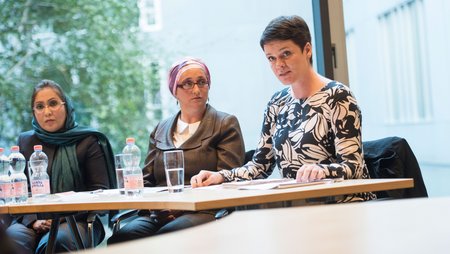
At the political level we speak up for women. As part of this advocacy work, we call on governments to stand up for the rights and protection of women and girls and to implement and uphold the relevant international treaties. We also engage stakeholders from the business sector in dialogue. And we network with other civil society organisations in order to campaign together for the enforcement of women’s rights.
Empowering women’s rights activists
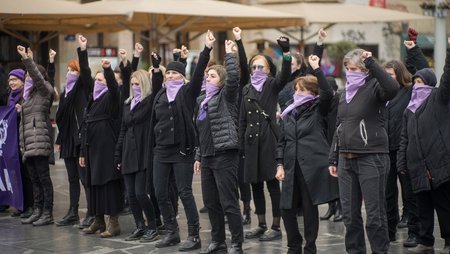
Many achievements in the field of women’s rights were only possible thanks to courageous interventions by women’s rights activists worldwide. Even today, many activists are working under the most difficult of circumstances, encountering severe resistance and putting their life on the line. In order to ensure activities to assert women’s rights can be continued in the long term, we work to protect and empower women’s rights activists. Together with our partner organisations, we have developed the Stress- and Trauma-sensitive Approach in order to help courageous activists take care of themselves and reduce their stress levels. The principle of mindful organisational culture is also an important component of this approach.
Further training for specialist staff
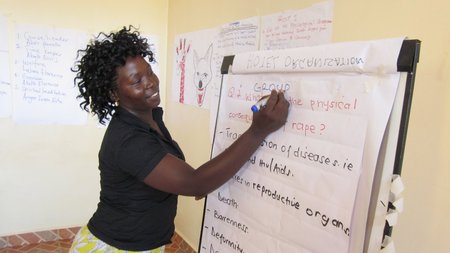
Patriarchal attitudes and power structures foster discrimination against women, give rise to violence and make it more difficult to process traumatic experiences. By offering training courses we want to enable specialist staff to adopt a Stress- and Trauma-sensitive Approach when, in the course of their work, they have to deal with the consequences of violence and traumatisation.
